Related Research Articles

Franklin Christenson "Chris" Ware is an American cartoonist known for his Acme Novelty Library series and the graphic novels Jimmy Corrigan, the Smartest Kid on Earth (2000), Building Stories (2012) and Rusty Brown (2019). His works explore themes of social isolation, emotional torment and depression. He tends to use a vivid color palette and realistic, meticulous detail. His lettering and images are often elaborate and sometimes evoke the ragtime era or another early 20th-century American design style.

Jules Ralph Feiffer is an American cartoonist and author, who at one time was considered the most widely read satirist in the country. He won the Pulitzer Prize in 1986 for editorial cartooning, and in 2004 he was inducted into the Comic Book Hall of Fame. He wrote the animated short Munro, which won an Academy Award for Best Animated Short Film in 1961. The Library of Congress has recognized his "remarkable legacy", from 1946 to the present, as a cartoonist, playwright, screenwriter, adult and children's book author, illustrator, and art instructor.

Daniel Gillespie Clowes is an American cartoonist, graphic novelist, illustrator, and screenwriter. Most of Clowes's work first appeared in Eightball, a solo anthology comic book series. An Eightball issue typically contained several short pieces and a chapter of a longer narrative that was later collected and published as a graphic novel, such as Like a Velvet Glove Cast in Iron (1993), Ghost World (1997), David Boring (2000) and Patience (2016). Clowes's illustrations have appeared in The New Yorker, Newsweek, Vogue, The Village Voice, and elsewhere. With filmmaker Terry Zwigoff, Clowes adapted Ghost World into a 2001 film and another Eightball story into the 2006 film, Art School Confidential. Clowes's comics, graphic novels, and films have received numerous awards, including a Pen Award for Outstanding Work in Graphic Literature, over a dozen Harvey and Eisner Awards, and an Academy Award nomination.
An autobiographical comic is an autobiography in the form of comic books or comic strips. The form first became popular in the underground comix movement and has since become more widespread. It is currently most popular in Canadian, American and French comics; all artists listed below are from the U.S. unless otherwise specified.
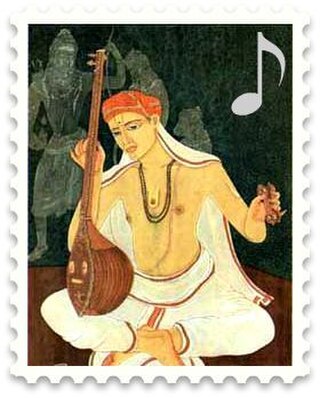
Music of Jammu and Kashmir reflects a rich musical heritage and cultural legacy of the Indian-administered union territory of Jammu and Kashmir. Two different regions of Jammu and Kashmir consists the Jammu region and Kashmir Valley. Music of Kashmir Valley has influences of Central Asian music while music from Jammu region is similar to that of other regions of North India.

Adrian Tomine is an American cartoonist. He is best known for his ongoing comic book series Optic Nerve and his illustrations in The New Yorker.

It's a Good Life, If You Don't Weaken is a graphic novel by Canadian cartoonist Seth. It appeared in a collected volume in 1996 after serialization from 1993 to 1996 in issues #4–9 of Seth's comic book series Palookaville. The mock-autobiographical story tells of its author's obsessive search for the work of a fictional forgotten cartoonist.

Kashmiri cuisine is the cuisine of the Kashmir Valley in the Indian union territory of Jammu and Kashmir. Kashmiris have developed the art of cooking to a very high degree of sophistication and evolved a cuisine quite distinct from that of any part of the world. Mughal emperor Jehangir, when asked his dying wish, responded, “Only Kashmir”, which referred not only to Kashmir's ecology but also to its comforting cuisine — crisp lotus fritters, floral kahwa tea and harissa, a fatty sheep dish. Everywhere there are roses, fruit orchards, gardens, lakes, avenues of poplar trees, rice paddies, cattle, sheep, goats, geese and meadows spangled with saffron, the world`s most expensive spice-requiring 75,000 flowers to produce just one pound. Located at the cross roads of subcontinent, central and middle Asia with borders stretching from Russia to Afghanistan, Kashmir has been called a melting pot of cultures, a crucible of practices, ideas and influences.
Dhar is a surname commonly found among the Hindu Bengali Kayastha community in West Bengal, India. Dhar or Dar is also used by some Kashmiri clans and communities native to the Kashmir Valley in Jammu and Kashmir, India, and common today among Kashmiri Hindus and Kashmiri Muslims.
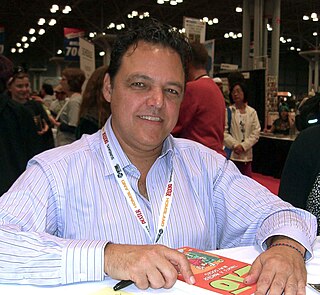
Mark Tatulli is an American cartoonist, writer, animator and television producer, known for his strips Liō and Heart of the City and for his work on the cable reality television series Trading Spaces and A Wedding Story, for which he has won three Emmy Awards. His comics have appeared in hundreds of newspapers around the world.
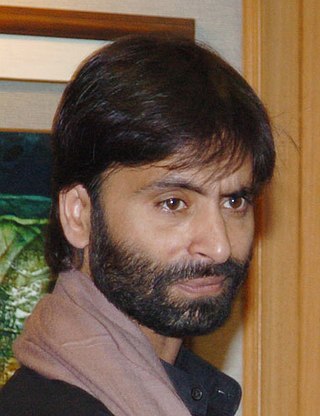
Yasin Malik is a Kashmiri separatist leader and former militant who advocates the separation of Kashmir from both India and Pakistan. He is the Chairman of the Jammu Kashmir Liberation Front, which originally spearheaded armed militancy in the Kashmir Valley. Malik renounced violence in 1994 and adopted peaceful methods to come to a settlement of the Kashmir conflict. In May 2022, Malik pleaded guilty to charges of criminal conspiracy and waging war against the state, and was sentenced to life imprisonment.
Amin Kamil (1924–2014) was a Kashmiri poet.
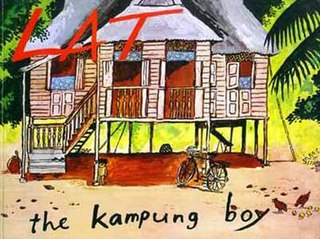
The Kampung Boy, also known as Lat, the Kampung Boy or simply Kampung Boy, is a graphic novel by Lat about a young boy's experience growing up in rural Perak in the 1950s. The book is an autobiographical account of the artist's life, telling of his adventures in the jungles and tin mines, his circumcision, family, and school life. It is also the basis for the eponymous animated series broadcast in 1999 and a musical theatre staging in 2011. First published in 1979 by Berita Publishing, The Kampung Boy was a commercial and critical success; its first printing was sold out within four months of its release. Narrated in English with a smattering of Malay, the work has been translated into other languages, such as Japanese and French, and sold abroad.
Verite Film Festival is an annual film festival of Kashmiri cinema held in Awantipora, Jammu and Kashmir, India.
Revolver is a graphic novel created, written, and drawn by Matt Kindt. It was first published in a hardcover format by the Vertigo imprint of DC Comics in July 2010. Kindt's intent was to craft a comic book story in a way that made it unfilmable. Images were created using only blue and brown lines.

Emil Ferris is an American writer, cartoonist, and designer. Ferris debuted in publishing with her 2017 graphic novel My Favorite Thing Is Monsters. The novel tells a coming-of-age story of Karen Reyes, a girl growing up in 1960s Chicago, and is written and drawn in the form of the character's notebook. The graphic novel was praised as a "masterpiece" and one of the best comics by a new author.
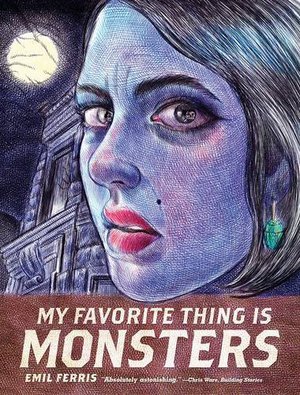
My Favorite Thing Is Monsters is the debut graphic novel by American writer Emil Ferris. It portrays a young girl named Karen Reyes investigating the death of her neighbor in 1960s Chicago. Ferris started working on the graphic novel after contracting West Nile virus and becoming paralyzed at age forty. She attended the School of the Art Institute of Chicago for writing and began the graphic novel to help her recover in 2010, taking six years to create 700 pages. The work draws on Ferris's childhood growing up in Chicago, and her love of monsters and horror media. The process of creating the book was difficult, with Ferris working long hours, living frugally, and encountering publishing setbacks, such as a cancelation by one publisher and the temporary seizure of the first volume's printing at the Panama Canal.

Tillie Walden is an American cartoonist who has published five graphic novels and a webcomic. Walden won the 2018 Eisner Award for Best Reality-Based Work for her graphic novel Spinning, making her one of the youngest Eisner Award winners ever. She was named Vermont's Cartoonist Laureate for the years 2023 - 2026.

Media in Jammu and Kashmir comprises a diverse landscape of print, electronic and digital media outlets. The region is served by a variety of newspapers, television channels, radio stations, and online news platforms, reflecting the cultural and linguistic diversity of the area.
References
- ↑ Gajarawala, Toran. Kashmir Stories. Dissent Magazine . Retrieved 13 October 2018.
- ↑ Kashmiri cartoonist Malik Sajad's graphic novel, Munnu, unveils life in the valley. Indian Express . Retrieved 13 October 2018.
- ↑ Shah, Fahad. Munnu A Boy from Kashmir review: Around barbed wires, many lives. Hindustan Times . Retrieved 13 October 2018.
- ↑ Recchia, Francesca. Malik Sajad's Munnu: a Graphic Novel From Kashmir. The Warscapes. Retrieved 13 October 2018.
- ↑ Malik Sajad's debut graphic novel portrays what it's like growing up in Kashmir. Dawn . Retrieved 13 October 2018.
- ↑ Bhanot, Kavita. Munnu: A boy from Kashmir by Malik Sajad, book review: A habitat under threat. The Independent . Retrieved 13 October 2018.
- ↑ Sahjwani, Natasha. Meet Verve Story Teller of the year winner Malik Sajad. Verve Magazine. Retrieved 13 October 2018.
- ↑ Chakraborty, Rohit. A Citizen of War: On Malik Sajad's 'Munnu: A Boy From Kashmir'. The Million. Retrieved 13 October 2018.
- ↑ Tagat, Anurag. Sketching a life in black and white. The Hindu . Retrieved 13 October 2018.
- ↑ Kashmiri writer Malik Sajad's graphic novel 'Munnu' retells horrors of Kashmir insurgency. First Post. Retrieved 13 October 2018.
- ↑ Foundation for Indian Contemporary Art. THE AMOL VADEHRA ART GRANT 2017-18. MALIK SAJAD. Retrieved 13 October 2018.
- ↑ Presentation by Malik Sajad. Retrieved 13 October 2018.
- ↑ Bhattacharya, Chandrima. Artist of the Line of no Control. The Telegraph . Retrieved 13 October 2018.
- ↑ Gulati, Sumegha. Why 'Munnu' is the Most Haunting Comic on Kashmir You Will Read. The Quint . Retrieved 13 October 2018.
- ↑ Ranka, Ayush. "I Want Readers to Share the Experience of Growing up in Kashmir". The Wire . Retrieved 13 October 2018.
- ↑ Candice. MUNNU: 'Life is precious in Kashmir just like it is everywhere else'. Fourth Estate. Retrieved 13 October 2018.